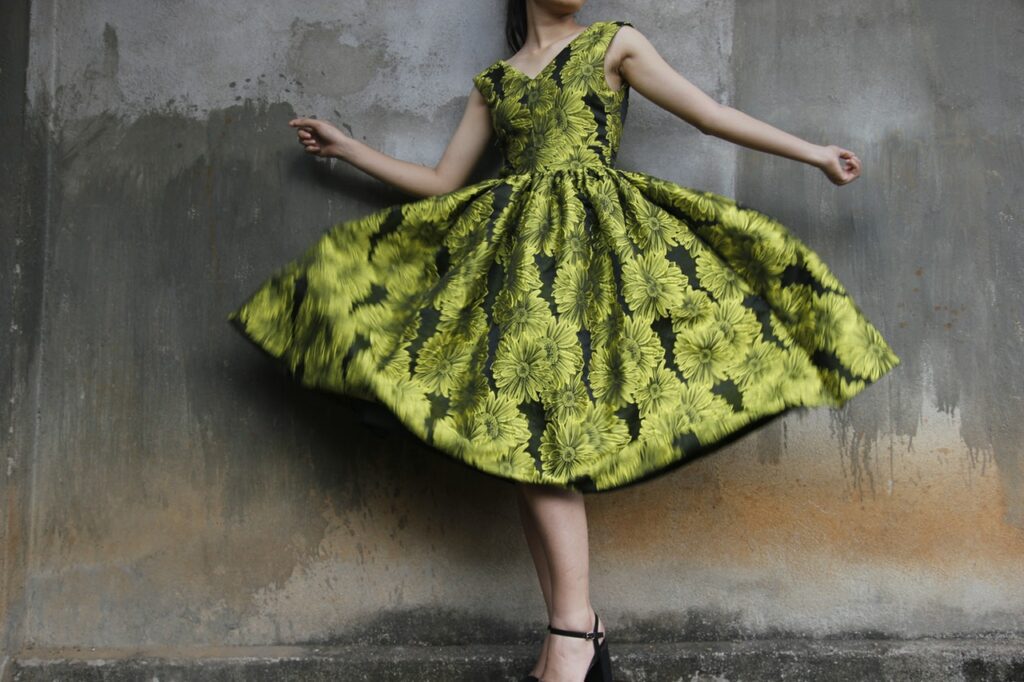It wasn’t that long ago when the only outbound link Instagram users could have was the one in their profile bio. Whilst this was great for bloggers, it proved limiting for ecommerce businesses. Linking to one product at a time, or just the homepage for many, meant that it was difficult to drive customers to specific products.
However, that’s all changed now and Instagram is already proving to be one of the most powerful platforms for ecommerce.
With 500 million users and 300 million daily users, Instagram is now one of the most popular social media platforms. What’s important for ecommerce is that around 68% of users claim to interact with or follow brands on the platform. That’s pretty significant compared to other platforms where this figure is around 32%. As a digital agency, we’ve seen an exponential rise in enquiries specifically about instagram marketing.
Given these stats, Instagram was quick on the uptake and introduced shoppable tabs, designed to provide users with a more ‘seamless experience.’ This allowed brands to tag specific products in posts, enabling users to click directly through to the product page and make a purchase.
To take this experience even further, Instagram announced recently that it is introducing a native payment system on the platform, meaning users won’t even have to leave the app to make a purchase. This is big news for ecommerce brands and could have an enormous impact on online sales.
The native payment option is being rolled out slowly across a few accounts. It is, however, set to be big, so it’s important that you are clued up and prepared for when you have access.
So, let’s go back to the start – what is product tagging?
When you upload a picture of a new product on Instagram, instead of directing potential customers to your ‘link in bio’, you’ll be able to physically tag that product.
Much like when you tag people, you’ll have the option, under where you type the caption, to ‘tag products.’ By clicking this, your product catalogue (see below) will appear and you’ll be able to select the corresponding product.
This will then mean that users will be able to click the image and be taken through to that product’s page on your website.

This, as you can imagine, makes for a much more streamlined shopping experience with some brands already reporting an 8% increase in revenue thanks to the new feature.
How do you set product tagging up?
Firstly, your profile has to adhere to the following:
- Your business must sell physical goods
- Your Instagram profile has to be converted into a business profile – here’s how
- Make sure you have the latest version of the app
- Your profile must comply with the platform’s commerce policies.
Then, you need to link your Instagram a Facebook Product Catalog.
What’s a Facebook Product Catalog?
Essentially, this is a catalogue of all the products you would like to sell. There are a few ways to do this, so go with the easiest option for your business.
Here’s a handy guide which takes you through each step.
What next?
Once you have synced your product catalog, your account will be reviewed. When approved, you will be able to start tagging!
Best practices
As with any kind of social media strategy, there are ways to optimise your posts for maximum success. Whilst product tagging is a great way to boost sales, it won’t guarantee them. It’s up to you to make your posts as visually appealing and engaging as possible.
Here’s a few tips…
Be aesthetic
It’s no secret that Instagram is all about beautiful, aesthetically pleasing photography. If you’ve worked hard to curate a feed which flows with a consistent brand look, be sure to keep this when posting product images and videos.
Whether they’re in your feed or on your stories, be consistent. It’s important that your followers know what they are buying into. You don’t want product images to stick out like a sore thumb. So, when taking product photography, make sure it fits with your overall brand look.

Check your links
Ok, so this is an obvious one to many, but it’s surprising how easy it is to tag the wrong product. Be thorough when tagging and always double-check that your post links through to the right product! Brands rarely get a second chance with this. If a user clicks through to something completely different and unrelated, it’s not going to look great.
Make their experience as seamless as possible by double-checking that everything works as it should.
Opt for user-generated posts where possible
Posts from existing customers can prove powerful when it comes to product tagging. Not only does this help endorse your products, but it also shows them in an authentic light.
For example, a women’s clothing brand could request for users to send in their snaps of them wearing a particular dress on a night out. You can then tag said dress and enable your followers to click through and purchase the dress.
This is often a great way to show off your products authentically, instead of via traditional product images. To obtain these images think about offering customers an incentive. Maybe a discount off their next order or the chance to win something. You have to remember that unless people are really thrilled with their purchase, they’re unlikely to go through the trouble of sending you images without an incentive…
Keep your sales post ratio in mind
New features are exciting and you’ll no doubt want to get tagging away. But, just remember that social media is not all about selling. Be wary of turning your profile into a sales pitch and remember to spread out your product posts.
If your followers see your feed filled with images that feature those little white shopping icons, it may turn them off your brand.
Continue to offer value and share posts that users can engage with instead of tagging products in every image.

Make the most of carousel posts for product lines or collections
If you’re launching a new range of products, you can group them together using a carousel post. This enables users to flick through the images and see the entire product group.
It’s a great way to show off a new theme or product launch and you can tag up to 20 products in up to 10 images. This is ideal for clothes collections, furniture collections and anything else really that comes as part of a collection!
Tag effectively
Instagram images are relatively small, so if you’re tagging more than one image, make sure that your space them out.
For example, if you’re tagging a hat and a necklace on the same model, make sure they don’t overlap. This will enable users to click the right product without any confusion.
Promote your Instagram ‘shoppable’ profile elsewhere
The key to success on Instagram is gaining an engaged following. Whilst it’s possible to do this directly on the platform, it’s helpful to promote your profile elsewhere.
For example, if you have a newsletter, be sure to include images from your shoppable Instagram feed on there. Remember, users like convenience, so if they know that they can shop directly from your Instagram profile, they’re more likely to follow.
Get hashtagging
Yes, good old hashtags. They’re a key tool on Instagram to getting your posts seen and engaging users. Be clear when choosing hashtags and always make sure they directly relate to the type of products you are selling.
Sometimes it pays to use more niche hashtags. When you use a trending or popular hashtag, your post can easily be lost into an abyss of millions of posts. So, choosing a more niche hashtag often gives your post more air time with users looking for that particular thing.
For example, if you were to post about a sofa you are selling, try to focus on more specific hashtags. Instead of using the obvious ones like ‘#sofa’ ‘#livingroom’, dig a little deeper and opt for tags like ‘#sofatrends2019’ or ‘#sofaideas’. Although these hashtags may have fewer followers, they will be seen by a more targeted, niche audience.
Focus on quality
It’s no secret that Instagram is all about visuals. Dull, grainy images and videos stand out on Instagram like a sore thumb for all the wrong reasons. It’s a visual platform so keep this in mind at all times.
Everything you post should be eye-catching and visually appealing. Be careful when posting product images on Instagram. Many brands make the mistake of sharing product images with stark white backgrounds which stand out compared to their day-to-day posts.
If you can, organise a product photography session with the objective of taking photos that mimic the rest of your feed. For example, a sports brand could organise a tennis match and have players wearing its apparel. The images would then flow far better with the feed instead of just posting a pair of trainers on a white background.

Use stories
If you aren’t using Instagram’s story feature yet, you’re missing a trick. It’s a great way to get in front of new users and demonstrates that you are an active brand. You can now also tag products in your stories so really think outside the box with this one.
If you’re holding a product launch, video key parts on your story and tag your new product. This will give users a behind-the-scenes snapshot (which they love) and enable them to click straight through to said product.
Engage
When you post a product on Instagram, don’t just forget about it and leave it to tick away. Bear in mind that people may want to ask questions before purchasing and this offers the perfect platform to do so.
Answer queries and be informative. This will show potential customers that you care and are able to offer advice and support. Even if people just comment to say they like the item – thank them and engage. This will only help to build your relationship with potential customers.
Make the most of ads
In 2019, social media is very much ‘pay to play’. Meaning that organic reach is far lower than before so in order to really make an impact, brands have to spend on ads.
This isn’t necessarily a bad thing though as the cost of advertising on Instagram is still relatively cheap. Plus, the targeting feature is second to none, meaning you can really hone in on your ideal customer base and get your products in front of them.
To help, here’s a handy guide on Instagram advertising.
To sum up
Product tagging can be extremely powerful for ecommerce. It’s convenient for consumers who no longer have to navigate away from the platform to make a purchase. The user journey has been simplified, meaning that brands that take advantage of this can really reap the rewards.
With Instagram planning to roll out a native payment option on the platform, this user journey is going to become even more seamless. So it really is the place to be right now if you sell online.
Just remember to keep the above tips in mind when posting to give yourself the best possible chance of converting those all-important sales.


